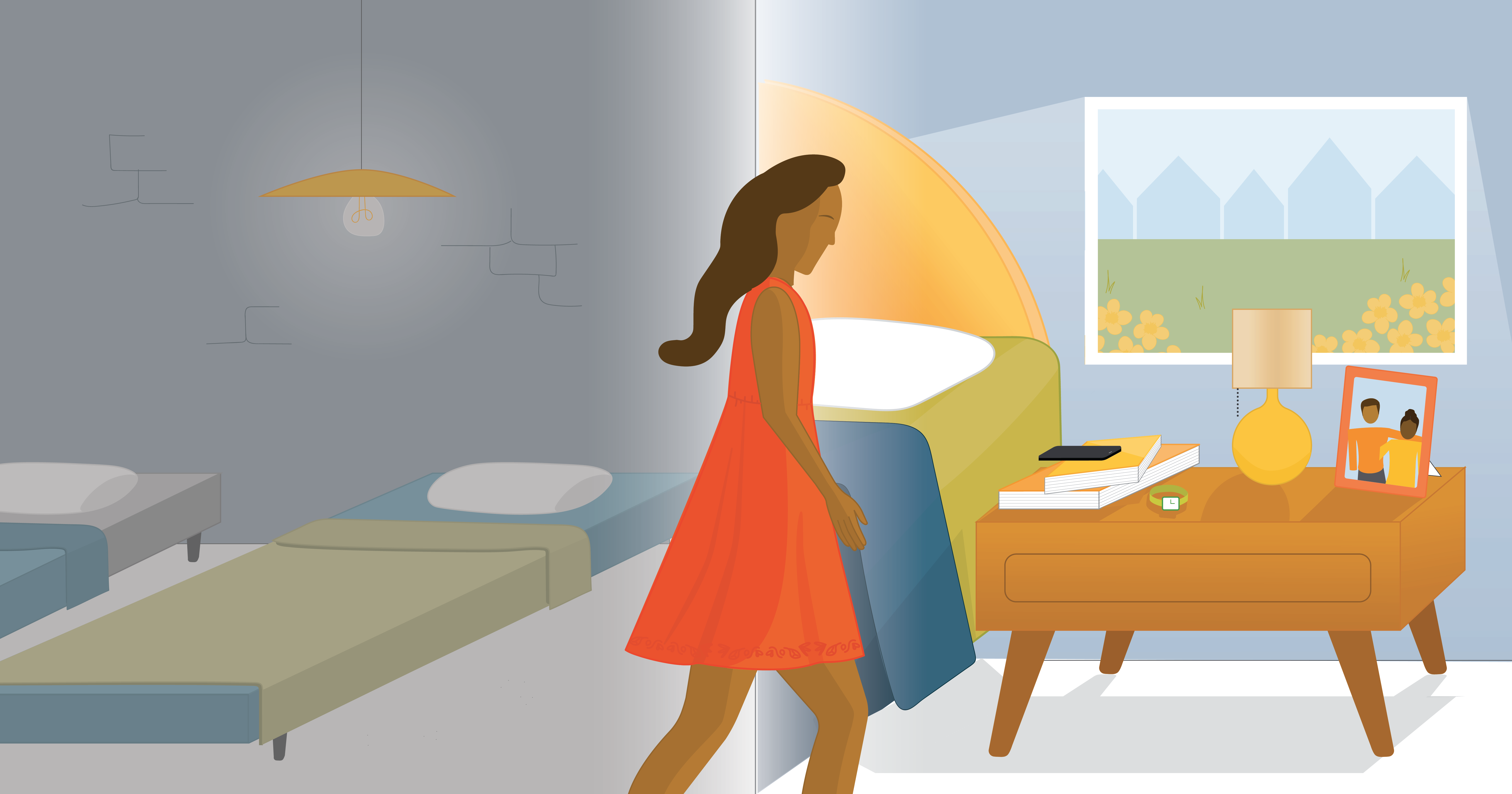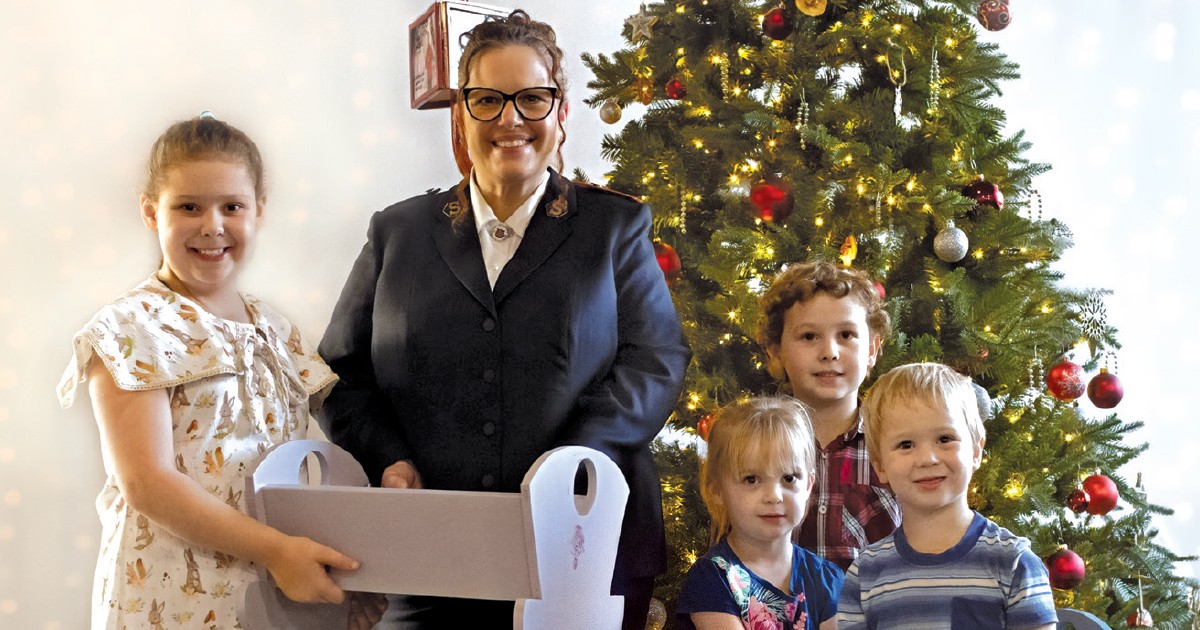“I spent the night at the Sally Ann.” People have been uttering words to that effect for more than 130 years, ever since The Salvation Army opened its first shelter in London, England. Indeed, The Salvation Army has been a household name in responding to homelessness. And as Canada’s housing crisis grows, the number of people who have stayed in one of our emergency shelters also continues to increase. More than 5,500 people could wake up tomorrow morning and use those words to describe their situation.
What if they could say instead, “I’m at home at The Salvation Army”? What would it look like for The Salvation Army to make home with people on purpose? Is that one of the things we envisioned when, together, we said, “We are an innovative partner, mobilized to share hope wherever there is hardship, building communities that are just and know the love of Jesus”?
I like to think so, and I’m not alone. Jake Aikenhead, director of The Salvation Army Gateway, a shelter in downtown Toronto, was reading my mind when he penned these words for the May/June issue of Salvationist:
“How much better off would our residents be if they not only had more space, but their own space, with their own washroom and kitchen, and their own door they could lock? Emergency shelters are an important part of responding to homelessness, but as the housing crisis in Canada has continued to worsen, they’ve become less effective at solving the problem. To truly address homelessness and begin building just communities where people feel safe and secure, we also need to find ways to create permanent, supportive housing.”
“Rather than ‘just’ a landlord, what if the Army could be a “ ‘just landlord’?”
I’m thrilled to report that The Salvation Army is doing just that—embarking on a new way to respond to the crisis of homelessness by creating permanent, supportive housing.
At Home at The Salvation Army?
The Salvation Army has recently published a new operating policy that articulates an important organizational shift already in practice at the local level, as ministry units seek to respond to the gaps in their local homeless-serving systems and meet the needs and desires of the people they already care for. The desire, we believe, is not just for housing, or for basic accommodation, but for home, in the fullest sense of that word.
In 2017, the Government of Canada released the first national housing strategy, a once-in-a generation, 10-year, $40-billion plan designed to give more Canadians “a place to call home.” The strategy signalled an intention on the part of the federal government to lead the provinces and territories in solving homelessness by investing seriously in affordable housing and other long-term housing solutions, more than in emergency interventions such as shelters.
What was clear then, and is still true now, is that The Salvation Army is heavily involved in emergency and other temporary responses to the crisis of homelessness. But what emerged as the result of a working group exercise, commissioned by the territorial management board in the wake of the national housing strategy announcement, was that partners within and beyond The Salvation Army recognized a vital opportunity for Salvation Army centres to play a more sustainable role in Canada’s drive to solve homelessness. And particularly in addressing chronic homelessness, which the Government of Canada hopes to cut in half by 2030.
There is a genuine question at stake in this moment: is it missional for the Army to be in long- term, home-full relationships with people? Or, as an organization, are we better suited to briefer, more immediate acts of love and help? There may always be a need for emergency response—there may always be people in trouble. Do we need to exclusively respond to emergencies to meet the Army’s mission? Or can we also fulfil our mission over the long term by making home?
And if the number of people who could say that they were at home at The Salvation Army rose, would the number of people who simply had to spend the night in the precarious place of our emergency shelters fall?
A Just Landlord
Historically, The Salvation Army has been reluctant to enter long-term housing relationships with people because of the complexity of operating within the provincial and territorial legislation that governs relationships between landlords and tenants. It is often said that The Salvation Army does not want to be a landlord. But reading between the lines, it seems more accurate to say that the Army doesn’t want to be “just” a landlord, or “only” a landlord.
In many discussions with stakeholders, the social mission department has gathered that the Army is not afraid of being a landlord as much as we’re afraid of losing our opportunity for connection and relationship with people. We don’t want to provide a purely socio-economic transaction.
In the past, The Salvation Army’s critique of “housing first”—an approach that prioritizes providing unconditional, permanent housing as quickly as possible to people experiencing homelessness, before addressing any other goals—has been the idea that mere housing is not enough. And by now, the advocates and policy-makers tend to agree. We know it’s not just housing—or only housing—that will make the difference, but housing must come first.
At this point, it seems that nobody—not us, not funders and most importantly not the people who will seek home with us—wants us to be “just” housing or “just” a landlord. As we in the social mission department listen, we hear people experiencing homelessness saying, among other things:
We want to belong. We want to feel known and cared for. We want to be supported when and how we need to be supported—and not just by those who get paid to do so, but also by feeling connected to our neighbours. We want to bring our whole selves to community—our strengths, our gifts, our interests, our brokenness, our shame, our capacity to love and to care for each other, our wisdom, our blind spots and our curiosity. We want to be well, to be at peace, to feel hope, to experience love.
And that’s exactly who we want to be, too, as a Salvation Army: loving, meeting one of the most basic human needs, bearing witness to and participating in transformation. Rather than “just” a landlord, what if the Army could be a “just landlord”? One that is benevolent, inclusive, equitable, supportive, dignified and fair?
The Right Housing
Supportive housing is home. Supportive housing is a solution to homelessness. Supportive housing is not another stop on the way home—it is home. And it aims to end the experience of homelessness as quickly and as meaningfully as it can.
Imagine for a moment what it might be like if you lost your home. The roof over your head. The lock on your front door. Your cherished belongings. Your habits and routines. The well- trodden paths you took to go where you needed to go. All of that familiarity and safety: both physical safety and a more metaphysical safety of feeling at ease and rooted in place.
What if you lost all of that? (Or worse, never truly had it to begin with?) And not by choice, but by circumstance? What if someone told you it would take months or even years to get back even the most basic elements of what you had lost? What if they told you you’d have to lose even more before you could be home again—that you would have to experience even less privacy and dignity, make do with even fewer belongings and a smaller amount of hope?
On the other hand, what if instead of waiting months or years in a precarious state of loss, someone offered you a modest home, with a built-in support system, so that you could begin the process of recovering? And what if there was no rush on that offer, no one pushing you slowly out the door, no one making you feel quietly or implicitly uncomfortable, like this place wasn’t for sure or forever?
Instead, your housing provider seemed to understand that you needed to be settled and supported before you could tackle whatever it is that you needed to tackle—and don’t we all need to tackle something? What if your housing provider understood that you were an expert on your own life, that you have resources and strength within you and that your story is not only made up of loss and lack? And what if you knew they were there for you, as little or as much as you needed, in the way that you needed, for as long as you needed?
Supportive housing aims to be the right housing, at the right time, with the right supports.
Questions to Consider
Now that the door has been opened from a policy perspective, we can turn our attention to the practical nuts and bolts of designing what a longer-term housing solution—in and by The Salvation Army—could look like. On that front, we have some testing to do. We need to bring our best, multidisciplinary thinking to the table to resolve some of the perennial questions and tensions that have held The Salvation Army in the temporary, emergency space, despite significant change in the homelessness sector around us.
The question of what it means and looks and feels like to be “at home” at The Salvation Army is one of those questions. Another is the question of risk. One risk is the implication that such a move might have for us under residential tenancy legislation in various jurisdictions. How might the Army anticipate and navigate these questions in a clear-sighted way?
There are also questions to consider around the implications this change might have for our historical, denominational position on the use of controlled substances, especially considering our growing awareness of the essential link between problematic substance use and trauma.
At opposite ends of Canada, in Fort St. John, B.C., and St. John’s, N.L.—fittingly both bearing the name of John, the apostle of love—Salvation Army personnel at the local, divisional and territorial levels are navigating these tensions together in the creation of new supportive housing developments. The social mission department and our mission partners are treating these two innovative projects as testing labs for a new way of doing things, charting a road map for others.
In St. John’s, the first handful of tenants are already at home. In Fort St. John, a modular facility is almost complete, and the Army anticipates welcoming people home this fall. Stay tuned for more about these exciting endeavours.
Building a Just Community
Rather than simply introducing a new program type, we believe that the opportunity before us—to offer more in the way of supportive housing and home—is, in fact, a renewal of The Salvation Army’s original calling to come alongside those who are most vulnerable to hardship, welcoming them in and offering hope and connection—both of which rightly belong to our understanding of “home.”
And, for that matter, the opportunity is not just about the Army’s core identity and our past, but is also a striking and timely illustration of our vision for the future—a just community built on innovation, partnership and Jesus’ love.
Dr. Amy Fisher is a consultant on housing and homelessness in the social mission department.
Illustration: Emily Pedlar










Comment
On Friday, October 7, 2022, Walter Boland said:
On Thursday, October 6, 2022, Joyce Ward said:
Yes!! Affordable housing, complimented with the supports vulnerable people need to get reestablished, is in critically short supply. As a member of the Simcoe County Alliance to End Homelessness in Ontario, I'm very gratified to see that The Salvation Army is reevaluating the contribution we can make. May God lead us.
Leave a Comment